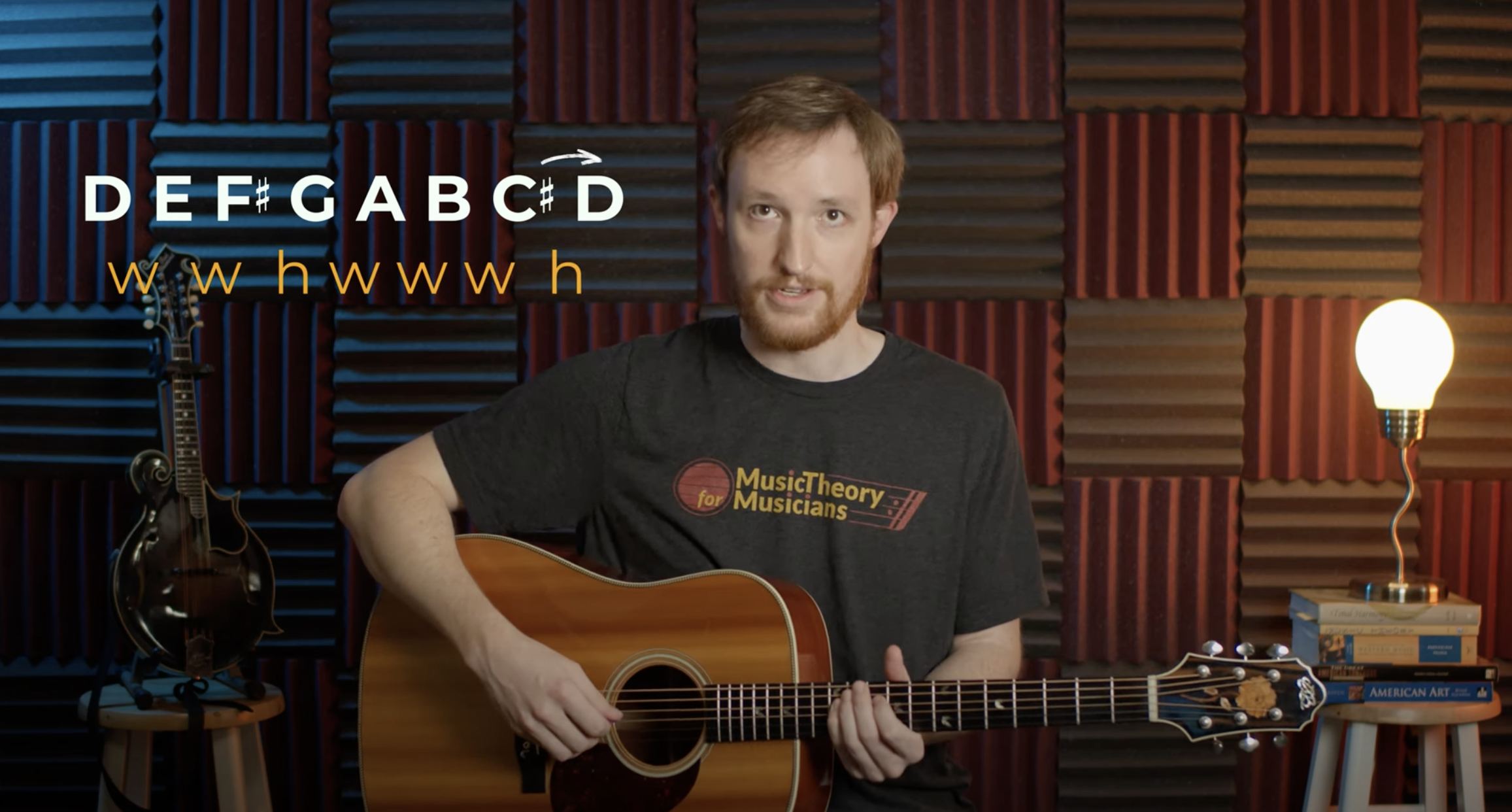3 Best Ways to Learn
Music Theory Scales
As simple as music theory scales are, it’s often difficult to know how to actually practice them. A lot of people just play the things back and forth over and over again and hope that they’ll magically remember them. But the tricky thing is, there are actually several things we have to remember about them, the names of the notes they’re made of, where the notes are on our instrument, and how to find these notes later when we're playing a song and not just a scale. That's why we practice 3 ways: Say It, Play It, and Do Both!
The Notes
Every scale will have a unique combination of sharps, flats, and natural notes, and we need a way to remember which notes go in which keys. This is where the first method, Say It, comes in.
Note: Be sure to do this forward and backward!! Most musicians don’t think of this, but music doesn’t just move upward in pitch. Example: The song, "Joy to the World" is literally just a backward scale. Try it!
Here, we’re going to just practice saying (yes, out loud) the names of the notes in a particular scale. Don’t worry about the instrument yet, we’ll get there in a minute. But for now, just pick a scale, we’ll use D major.
The names of the notes in a D major scale are:
D E F# G A B C# D
So first, just practice saying the names of these notes out loud.
The Locations
NOW it's time to play these scales on your instrument. This time we're talking about Play It. This time you can forget about the note names and just play the scale on your instrument. Start on the D note, then progress upwards in whole-steps and half-steps using the pattern: Whole Whole Half, Whole Whole Whole Half
...until you get to your next D note. (You can basically do this by ear, as most people are pretty good at determining what a scale is supposed to sound like.)
Learning to Navigate
Now we're going to Do Both of those things at the same time. This is pretty much just what it sounds like, you play through the same scale, but this time you call out the name of the note as you play it. Play a D note and say, "D." Play an E note and say "E." Keep doing this until you get to the ending D, and don't forget to come back down! Remember, always practice these going forward and backward.
This can take some time to get the coordination down. I always love seeing students who are pretty good at a scale, have to slow waaaay down in order to Say it and Play it together. So what's the trick to this? Slow it down! There's no need to go faster and play the wrong notes. Keep it slow and get it right. Consistency is what builds speed.
Tips for Music Theory Scales!
- I just said it, but you're likely already speeding it up. Keep it slow! Playing slowly allows you to be accurate, and being consistently accurate is what helps you learn this faster. The goal here is not speed, it's fluency. We want to be familiar and comfortable enough with a given scale to where it seems easy and manageable.
- Start with the easy keys. Even if you already know several scales, start with some easy ones to get used to this process. Start with C, super easy: it's just the alphabet. Then go around the Circle of Fifths and add a sharp (or a flat), then add another, and another, etc.
- Accent the Accidentals! When you come to a flat or a sharp, Play it and Say it LOUDER! By treating these notes differently, your brain is more likely to remember them, and remembering which notes are sharp or flat is the key to playing in new keys! (See what I did there? Key? Yeah I'll just be going now...)
Keep At It
All of this sounds like it will take a lot of time. It doesn't. For any scale you're working on, Say It should just take 5 minutes or so, then you're likely done with it. Play It will be the most useful to practice regularly, which is good because it can take some time to sink in if you're learning a new instrument. Do Both is potentially the most useful, but also the most neglected! Very few musicians practice music theory scales this way, but if you do, you'll be among the few who can pickup and learn a new scale at rapid speeds, and actually remember how to play in that key when you're in a song!
Hope this helps! Practice hard and let me know if you have any questions!
